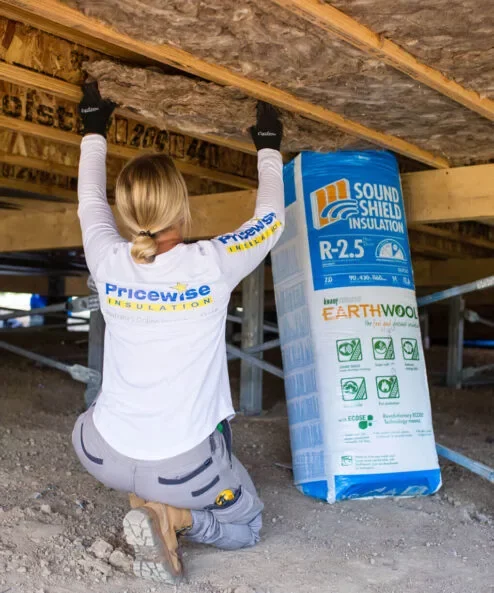Insulation Tips
Common Misconceptions About Cold Floors
Understanding the factors that contribute to a cold floor can help you resolve the problem and lead to added comfort and savings on your energy bills. This article explores some common myths about cold floors and details one of the most effective way to address the issue.
Myth #1: If the Floor is Sealed, it Won’t Get Cold
Let’s say that someone has been putting up with a cold floor for quite some time. While it hasn’t really been an issue in summer, it is always noticeable during the colder months of the year. Then one day they discover that there are several gaps in their flooring. At this point in time it would be a fair assumption for the home owner to make that this must be why the floor is cold, so they set out to address the issue and seal up all the gaps in the floor. However, the truth is that while cracks in the floor do exacerbate problem, and sealing gaps will improve the situation to a small extent, it won’t actually solve the problem.
Myth #2: The Floor is Cold Because Hot Air Rises
Yes, hot air rises, but this does not explain why the floor is cold. Materials lose their heat when they come into contact with something that is colder than themselves and which is conducive to heat transfer. Underfloor insulation provides the necessary barrier between the floor and the cold air underneath, so that it is not in direct contact with cold air. Insulation is a poor conductor of heat, and it will be difficult for the heat in the flooring to be transferred to the insulation itself, let alone pass through it. This will cause the flooring material to retain its heat, making it more comfortable during cold weather.
How Can Underfloor Insulation Reduce Energy Bills?
In winter, we generate warmth inside the home. Our thermostat recognises when the house has reached a set temperature and the heater is automatically switched off. The warmth stays in a well-insulated house even after the heater has turned itself off. However, up to 20% of heat can be lost through an uninsulated floor in winter. This means that the heating system has to keep on generating heat to maintain the desired temperature. The result is a higher energy bill. Some of the heat is lost through cracks or gaps and some is lost through the actually flooring material. By sealing the gaps and installing insulation directly under your floor, you address both of these “leaks”.
Installing Underfloor Insulation in Existing Homes
Installing underfloor insulation can be somewhat of a challenge, depending on a number of factors. The most obvious is the space underneath the floor of the house which is quite often limited, sometimes to the extent that you will be forced to move around whilst lying on your back and install insulation over your head. While it may be possible to do it yourself, there is always the option of booking in a professional installer to do the job for you.











